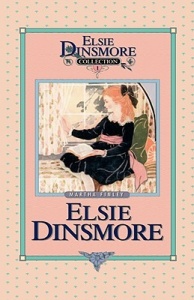Martha Finley
Listen to the Recess! Clip
| Author | Rita Smith |
| Air Date | 4/15/2003 |

Martha Finley Transcript
Although Martha Finley was practically a pariah among historians and critics of children’s literature and was ignored by reviewers, she was wildly popular with her young readers. The book she wrote and published in 1867, Elsie Dinsmore, outsold every other juvenile book with the exception of Little Women and stayed on the publishers in-print list for over fifty years.1
Finley wrote over 100 volumes for children, including some early stories for the Presbyterian Board of Publication which were published anonymously and distributed to Sunday Schools, but she is best known for the 28 volumes of her Elsie Dinsmore series. Finley said once that the inspiration for Elsie came in answer to her prayer for something which would bring in money and she had no intention of there ever being even one sequel to the book, let alone 27, but each successive volume left in its wake a clamor for another. Midway through the series, in the preface to Elsie’s Children, Finley proposes laying Elsie to rest. “With this volume bringing the story of Elsie down to the present time,” she writes, “the series closes.” But her fans would have none of it. They demanded more and Finley acquiesced.
One of the dominant themes of the first Elsie books is the relationship between Elsie and her father, Horace, who alternately tyrannizes and pampers her. From the beginning Elsie’s most fervent desire is to win the love of her father and to convert him to Christianity and through persistence carried out in meek loving obedience she accomplishes this in the second book. Other themes in the series are the subordination of women to men and, a corollary to that, the primacy of unselfishness. To sacrifice one’s own needs, as Elsie does, to the welfare of all others is the key to happiness.
Today it is difficult to understand the public’s insatiable appetite for the Elsie series. They are excessively sentimental, moralistic, and melodramatic, written in a lugubrious style with stilted dialogue and the last fifteen or so have very little plot. Maybe other Elsie fans were like the writer G. B. Stern, who said she read them “When she craved really tough stuff” because Elsie’s, moral fiber offered “tough neurotic realism.”2 1 Smedman, p. 179. 2 Quoted in Smedman, p. 185.
Source
Smedman, M. Sarah. “Martha Finley” in American Writers for Children, before 1900, Dictionary of Literary Biography, v. 42, Glenn E. Estes, ed.